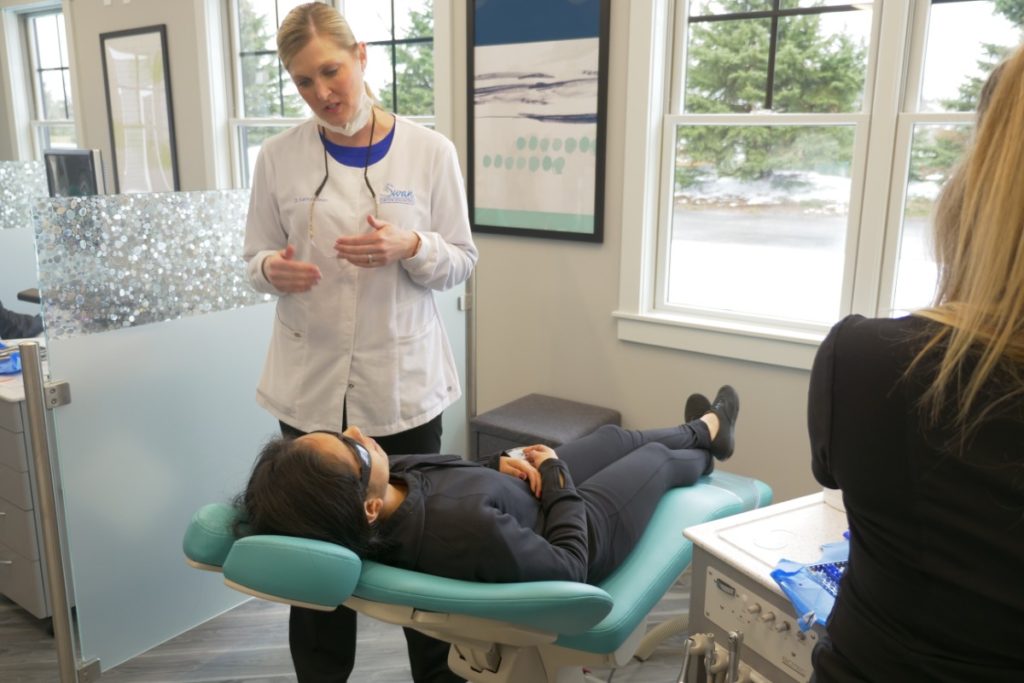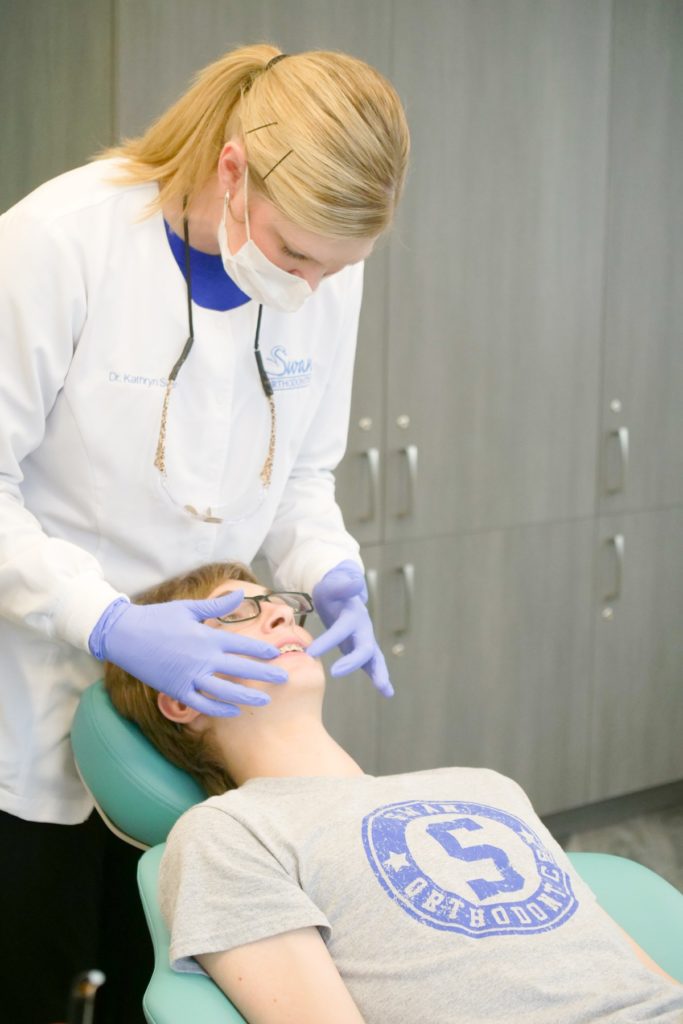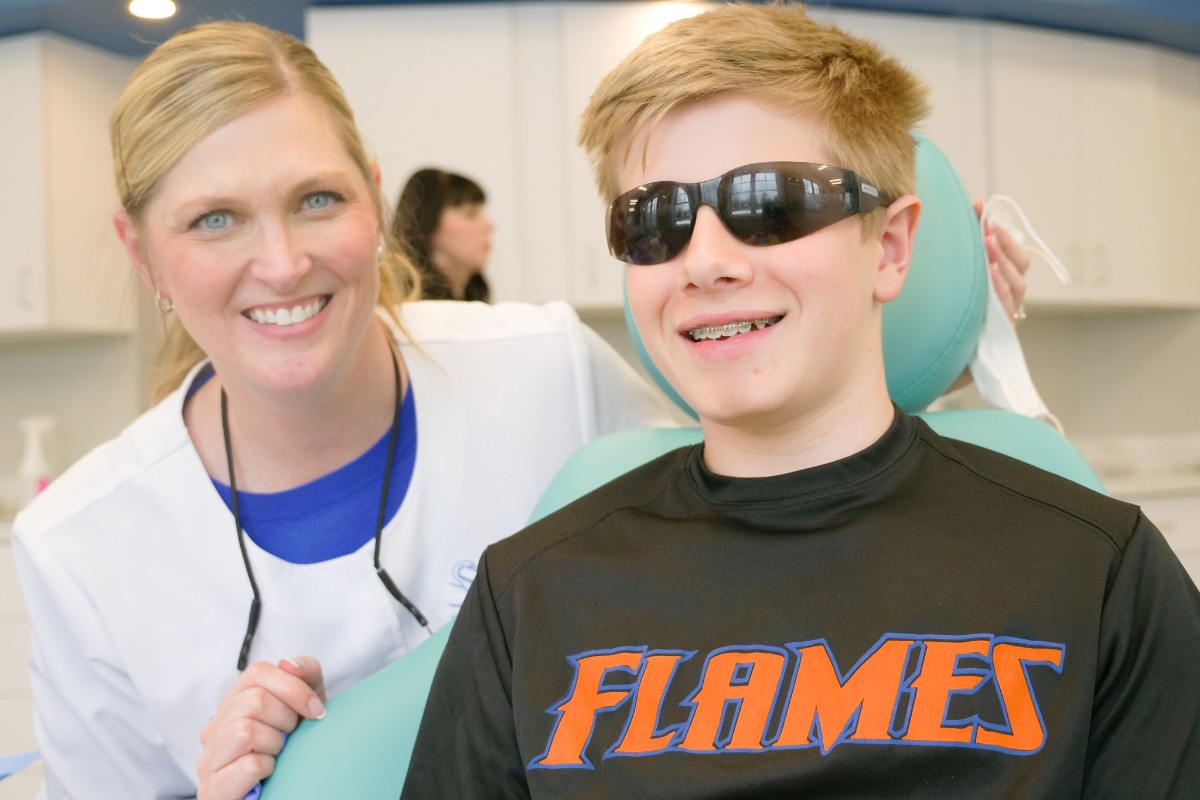Orthodontics have seen numerous advances in recent years, giving patients more choices than ever before when it comes to treatment options. But even with all this innovative new technology and techniques, traditional braces remain one of the best tools we have for creating straighter, healthier smiles for patients of all ages. Braces have long been a popular method of treatment, thanks to their impressive track record for aligning teeth and jaws, but the benefits don’t stop there. Traditional braces are also durable, cost-effective, and incredibly efficient for cases from mild to severe. It’s no wonder they’re the top orthodontic treatment, year after year!
Beginning braces treatment with an experienced orthodontist like Dr. Swan is an exciting time. After all, you’re embarking on a journey that will lead to improved oral health and a beautiful smile! It’s not uncommon to still have questions and concerns, though. Here at Swan Orthodontics, we want you to feel confident in the trust you’ve placed in us, and in your choice to pursue orthodontic treatment. That’s why we’ve put together this outline of everything you need to know before beginning your braces treatment. Keep reading to learn more!
What are braces made of?
In order to gain a better understanding of how braces work to straighten your teeth, it helps to have some knowledge about what they’re composed of. Though there are many moving parts in braces treatment, we’ve listed the most important components below.
Brackets
Brackets are the part of braces that we attach directly to your teeth, and they’re typically made from a mix of stainless steel, nickel, ceramic, or other high-quality materials. They have tiny hooks or doors over which the wire is threaded, then secured by closing the door or by applying an elastic over the top of the wire.
Glue
Tooth glue is technically a form of the same composite bonding material we use for tooth-colored fillings or sealants. We use this adhesive to attach the brackets to the teeth. In some cases, we may also use metal bands on the back teeth in conjunction with the glue to give braces more leverage and stability.
Wire
This thin piece of metal runs from one bracket to another. Throughout the treatment process, we will change the shape and curvature of the wire. These bends are what actively move the teeth in the desired directions. For some patients, we will use the wire to attach all the bottom or upper teeth together. In other cases, we may cut the wire more strategically if connecting only a few teeth is better for the treatment plan.
Elastics
Almost everyone will need elastics at some point in their treatment plan, but they’re essential for patients in need of bite correction. Elastics are usually strung between an upper bracket hook and a lower bracket hook, pulling the upper teeth backwards to correct an overbite, or the lower teeth backwards to correct an underbite. While we use rubber bands for many different situations, they’re particularly helpful for bringing the upper and lower teeth together successfully.

How do braces work?
During your first visit to our Caledonia office, we’ll introduce you to some of our talented team members and give you a brief tour. We’ll then take any diagnostic photos and x-rays we need before Dr. Swan performs a thorough oral examination. This will allow her to diagnose any oral issues and decide on the best treatment option for you. After you’ve decided on a customized treatment plan together, we’ll schedule you for an appointment to have your braces put on and begin the orthodontic process.
Your personalized treatment plan will include information on how each tooth needs to be moved in order to meet the goals Dr. Swan has set forth for your smile. She’ll decide how to place your brackets based on this information. Once the brackets have been attached, the wire will be inserted. We touched on wires briefly above, but a bend in the wire is how we encourage specific and precise movements. That’s because these bends provide different types of pressure on different teeth. This process of tooth movement is called remodeling, and involves minor changes in the bone that surrounds the roots of teeth.
Essentially, when pressure is put on the tooth, cells called osteoblasts and osteoclasts form around the tooth’s root. The pressure of the wire works with the osteoblasts and osteoclasts to create a negative pressure on one side of the tooth. At this site, bone is removed. On the other side of the tooth, bone is reformed. This pressure and remodeling slowly moves teeth into the desired positions, eventually giving you a straighter smile!
This remodeling process can only occur if constant pressure is put on the tooth. Once the pressure stops, like when braces are removed, most teeth will eventually start to drift back to their old positions. This is why retainers are so important! Once your treatment is complete, Dr. Swan will give you a retainer. Wearing it exactly as directed will help to keep your teeth in their new, improved positions and prevent any natural drifting.
Caring for your braces
Caring for your braces can come with a bit of a learning curve, since there are a lot of nooks and crannies to work around. However, a little patience and a lot of practice goes a long way! As a braces patient, we recommend you brush your teeth thoroughly with fluoride toothpaste at least two times every day for at least two minutes each time. This is especially important after meals and before you go to bed. Pay close attention to the areas between the brackets and gums, and carefully clean between the wires and teeth. Interdental brushes can make this easier, since they fit in between the wires and the teeth to remove hard-to-reach plaque and food debris.
Flossing is also essential for maintaining your oral health, and it should be done at least once per day. If you find regular dental floss difficult to manage, try a floss threader or an oral irrigator like a Waterpik to give your flossing a boost. These tools shouldn’t take the place of brushing and flossing, though.

Food restrictions
Food restrictions can be challenging, especially in the beginning, but they’re necessary to protect both your braces and your teeth. While you’re in braces, you’ll need to avoid any foods that are too crunchy or too chewy, such as chips, ice, gum, some raw fruits and veggies, popcorn, and many different kinds of candy. While this can be frustrating, remember that these food restrictions are only temporary! All the hard work and dedication you’re putting in now will pay off when your braces are removed and you see your beautiful new smile for the first time.
Estimated treatment times
There’s no “one size fits all” answer for how long any patient will need to be in braces. Every smile is unique and each patient responds to treatment in their own way, so treatment time will vary on a case-by-case basis. On average, the active stage of orthodontic treatment lasts anywhere from 6-24 months, but this can be longer or shorter, depending on the specific case.
Find a straighter, healthier smile at Swan Orthodontics
The first step in any orthodontic journey is a consultation with an experienced orthodontist like Dr. Swan. At Swan Orthodontics, this initial visit is free! If you’re in the Grand Rapids area and would like more information on how braces can work for you, get in touch with us today. The smile you’ve always wanted is waiting here for you!

